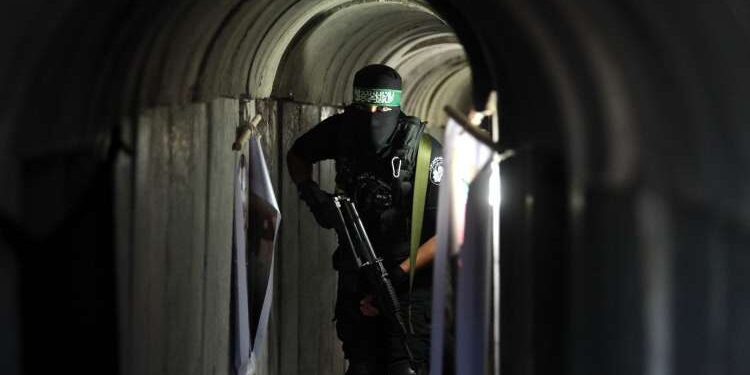More than five hundred kilometers of interconnected tunnels, highly secure and supplied with electricity, oxygen, water and food, it is a second underground city in Gaza.
Known by the name of “Metro de Gaza”, the tunnel network built by the Palestinian resistance factions, notably Hamas, is the worst israelis nightmare.
Gaza tunnels refer to the underground passages dug under the border between the Gaza and Israel Strip, as well as those which connect Gaza to Egypt, in addition to the tunnels which do not exceed the borders of this band.
These tunnels were widely used for various activities, including the transport of goods and people, the bypass of movement restrictions imposed by Israel and the delivery of weapons and military materials to Gaza.
The tunnels had a complex and controversial role in the region. From the point of view of the Palestinians of Gaza, they were often used to bypass the economic and humanitarian blockade imposed by Israel.
However, Israel has often expressed concerns with regard to the use of tunnels for the importation of weapons and ammunition by militant groups, including Hamas, which controls the Gaza Strip, moreover, it has destroyed several kilometers of tunnels by using special weapons.
Indeed, control of tunnels has always been a subject of conflict and negotiations in the region, and Israel has taken measures to detect and destroy potential military tunnels, considering this as a security issue.
Unsurprisingly, the information on this underground labyrinth is extremely rare, but here is what we know.
500 kilometers
If at the start, the initial objective of the tunnels was smuggling with Egypt from the 2000s, today we mention a large network estimated at 500 kilometers bringing together defense tunnels and other attacks.
According to his spokesperson Abou Obeida, one of the objectives of the tunnels is the capture of Israeli soldiers to exchange them for Palestinian prisoners held by Israel.
Tunnels can sink up to 30 or 40 meters underground, accessible by wells and entries that can be found in urban areas under buildings and public buildings, often in the heart of Gaza.
The tunnels are generally narrow while others are wide enough to let vehicles pass. Some are provided with electricity and have a communication system independent of that of Gaza.
600,000 tonnes of concrete
According to the Wall Street Journal, the construction of tunnels cost Hamas some $ 90 million and required 600,000 tonnes of concrete.
The black trade in these tunnels would generate, according to the same source, annually up to $ 700 million in the economy of Gaza and will provide employment to 7,000 people.
Comfortable, they allow Hamas members to shelter there for long periods. These Gaza tunnels are a deep, enlightened and air -conditioned network.
We talk about galleries where we can spend a lot of time, serving as shelters for Hamas fighters during bombings. These are spaces where you can move and stand up.
Risk of collapse
Some of these tunnels are very dangerous due to the clandestine nature of these structures which can collapse at any time. Hamas himself reported 22 accidental deaths in 2017.








